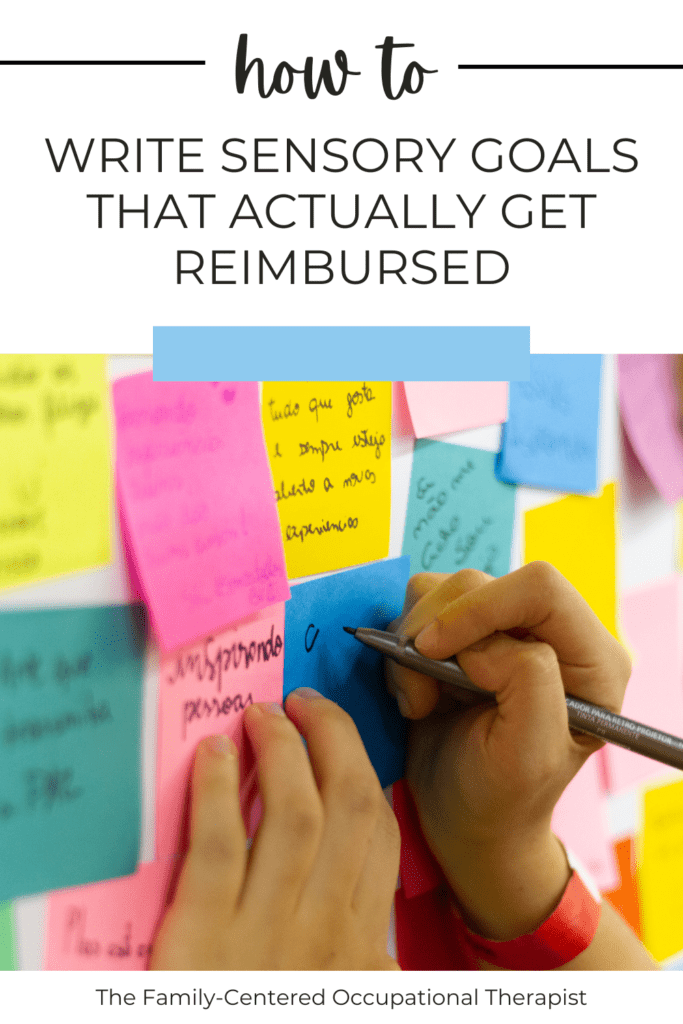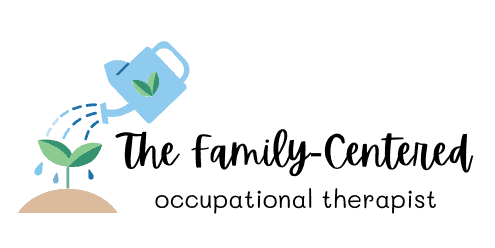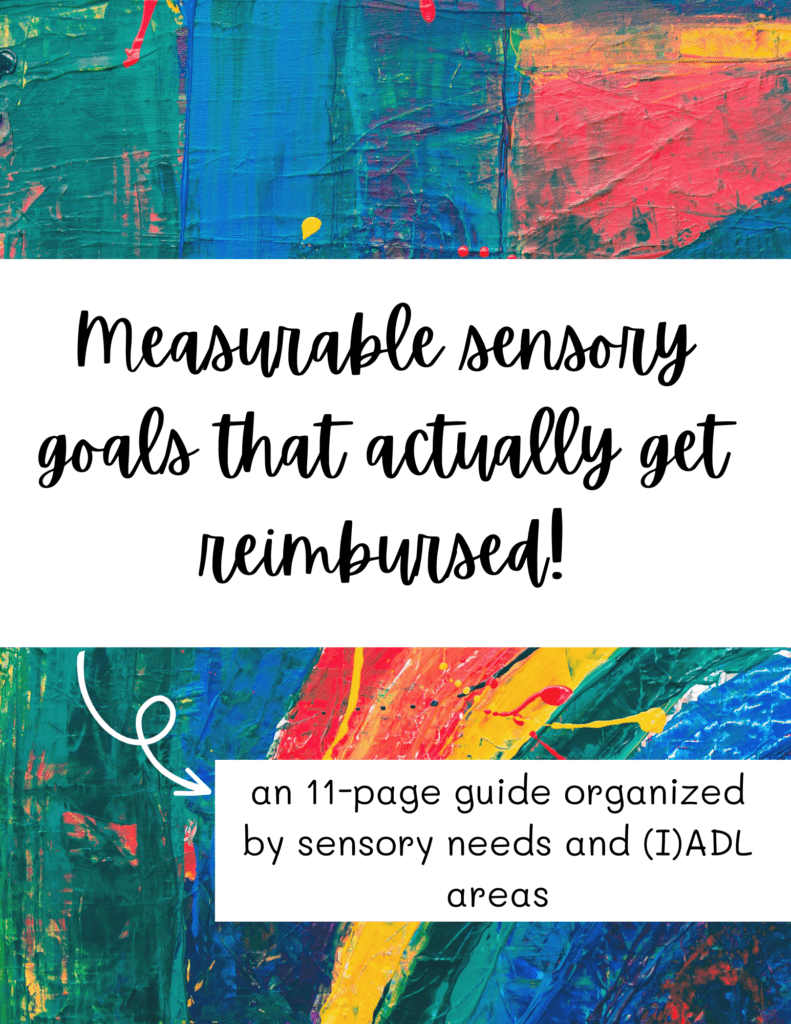Many occupational therapists using a sensory framework run into insurance denials. Unfortunately, due to low quality studies conducted in the past, insurance companies believe that sensory integration therapy is ineffective. However, recent, high-quality studies with fidelity measures embedded have shown that OT using a sensory integration framework is effective for many children.
When deciding whether or not a treatment plan gets covered, insurance looks at a multitude of factors. For example, they look at diagnosis codes, objective findings, goals, and other areas. It is important, therefore, to write reimbursable goals.
What kind of OT goals get reimbursed by insurance? *
Frequently, insurance companies approve goals that cover ADLs (activities of daily living) and IADLs (instrumental activities of daily living), as these are considered most functional and impactful. Therefore, it’s important to refer to the OTPF (OT practice framework) and use proper ADL and IADL terminology when writing goals.
Additionally, making your goals measurable and specific can help you and insurance track a child’s progress towards goals.

So how do I write sensory OT goals that get reimbursed?
I like to use the following format in order to ensure my goals get reimbursed:
In order to increase participation in (occupation – I/ADL), (name) will demonstrate enhanced (client factor), as evidenced by (specific, measurable outcome), over the course of (number) of sessions.
You can also add in the level of assistance and other supports the client needs to achieve the goal.
Some examples of goals I’ve written are as follows:
- In order to increase participation in eating, (name) will demonstrate enhanced SR and sensory modulation as evidenced by engaging in messy play with wet/sticky foods without adverse reaction (i.e. withdrawing, asking for clean hands immediately, etc.) over the course of 2 weeks or as per parent report.
- In order to increase participation in bedtime routine, (name) will demonstrate enhanced SR and sensory modulation as evidenced by bedtime routine taking 1 hour from start of bathroom routine to falling asleep, with modifications to task/environment as needed, at least 70% of the time as per parent report.
If you need further help with goal writing for sensory challenges, I made a goal list broken down by sensory area and I/ADL available for purchase here.
I hope this helps your clients get insurance approval! I know it can be tricky sometimes. Feel free to contact me with any questions.
*Disclaimer: these directions are general directions and do not guarantee reimbursement by insurance. Each state and insurance policy have their own guidelines. A few insurances simply won’t cover sensory goals, no matter how you frame it. However, many of them will cover sensory goals, as long as you present them appropriately.


